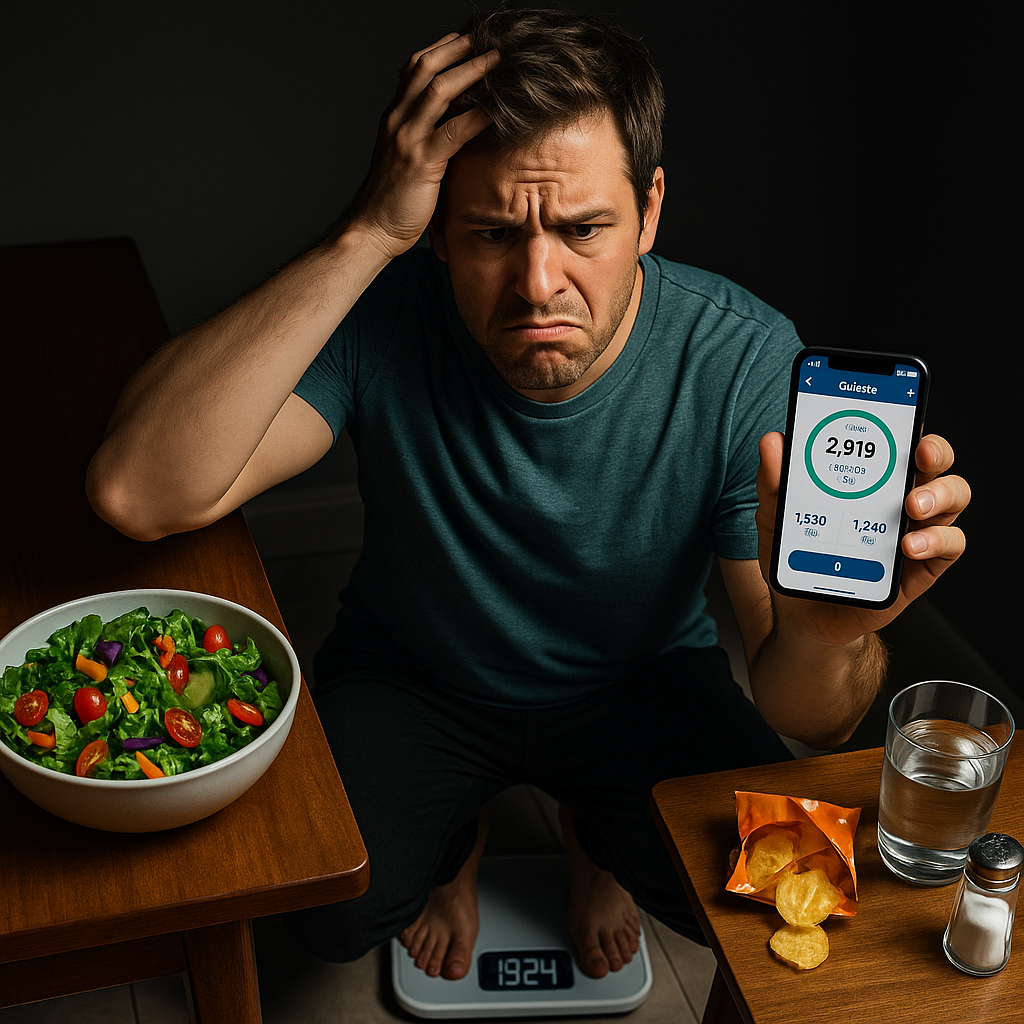
It’s the most frustrating experience in the world of fitness and weight loss. You commit. You download the app, you buy the food scale, and you meticulously create a 500-calorie daily deficit—the textbook prescription for losing one pound per week. You feel a sense of virtuous accomplishment. But then, you step on the scale after a few weeks, and the number has *crept up*. Panic, confusion, and a deep sense of injustice set in. “I’m doing everything right!” you scream internally.
I know this feeling because it happened to me. And after spiraling down a rabbit hole of research and speaking with experts, I discovered that calories are only one part of a much more complex story. Here are the reasons why my “perfect” deficit backfired.
1. The Water Weight Woes:
When you first reduce your calorie intake, especially if you simultaneously increase your exercise, your body burns through its stored glycogen (carbohydrate energy in your muscles and liver). Glycogen is stored with a lot of water. For every gram of glycogen you use, you release about 3-4 grams of water. So, while you might see an initial “whoosh” of water weight loss, if you have a high-sodium meal or your hormones fluctuate, your body can easily cling to extra water, masking any fat loss on the scale. This water retention is a huge reason for short-term weight gain, even in a deficit.
2. The Cortisol Catastrophe:
This was the biggest revelation for me. Creating a drastic calorie deficit is a physical stressor on your body. When your body senses a “famine,” it releases the hormone cortisol. Chronically elevated cortisol does two things that are terrible for weight loss: it promotes the storage of fat, particularly around the abdomen, and it signals your body to hold onto water. I was so stressed about hitting my calorie goal and seeing the scale move that my body was in a constant state of low-grade panic, effectively shutting down my fat-burning capabilities.
3. Muscle Loss and Metabolic Adaptation:
When you don’t consume enough calories, and particularly enough protein, your body looks for energy elsewhere. After glycogen, the next easiest source is not just fat—it’s also muscle tissue. Muscle is metabolically expensive; it burns calories just to exist. As I lost muscle, my Basal Metabolic Rate (BMR)—the number of calories I burn at rest—decreased. So, the 2000-calorie diet that once was a 500-calorie deficit might now only be a 200-calorie deficit because my metabolism had downshifted to conserve energy. It’s a cruel, adaptive survival mechanism.
4. The Exercise Equation:
I was eating less but also pushing myself harder in the gym. Intense exercise causes micro-tears in muscle fibers, which is a good thing for growth, but it also triggers inflammation. This inflammation leads to—you guessed it—water retention as your body works to repair the damage. Furthermore, I was overestimating the calories burned during my workouts and then inadvertently eating back those calories by being less active throughout the rest of the day (a phenomenon known as non-exercise activity thermogenesis, or NEAT, reduction).
The Solution: A Mindshift
I stopped the drastic deficit. I reversed-dieted, slowly adding calories back in, focusing on protein, to rebuild my metabolism. I prioritized sleep and stress management (meditation, walks) as much as my diet. I swapped some intense cardio for strength training to preserve muscle. The scale became less of a focus, and how my clothes fit and my energy levels became the true metrics. The weight eventually started to come off, not from fighting my body, but from working with it.
